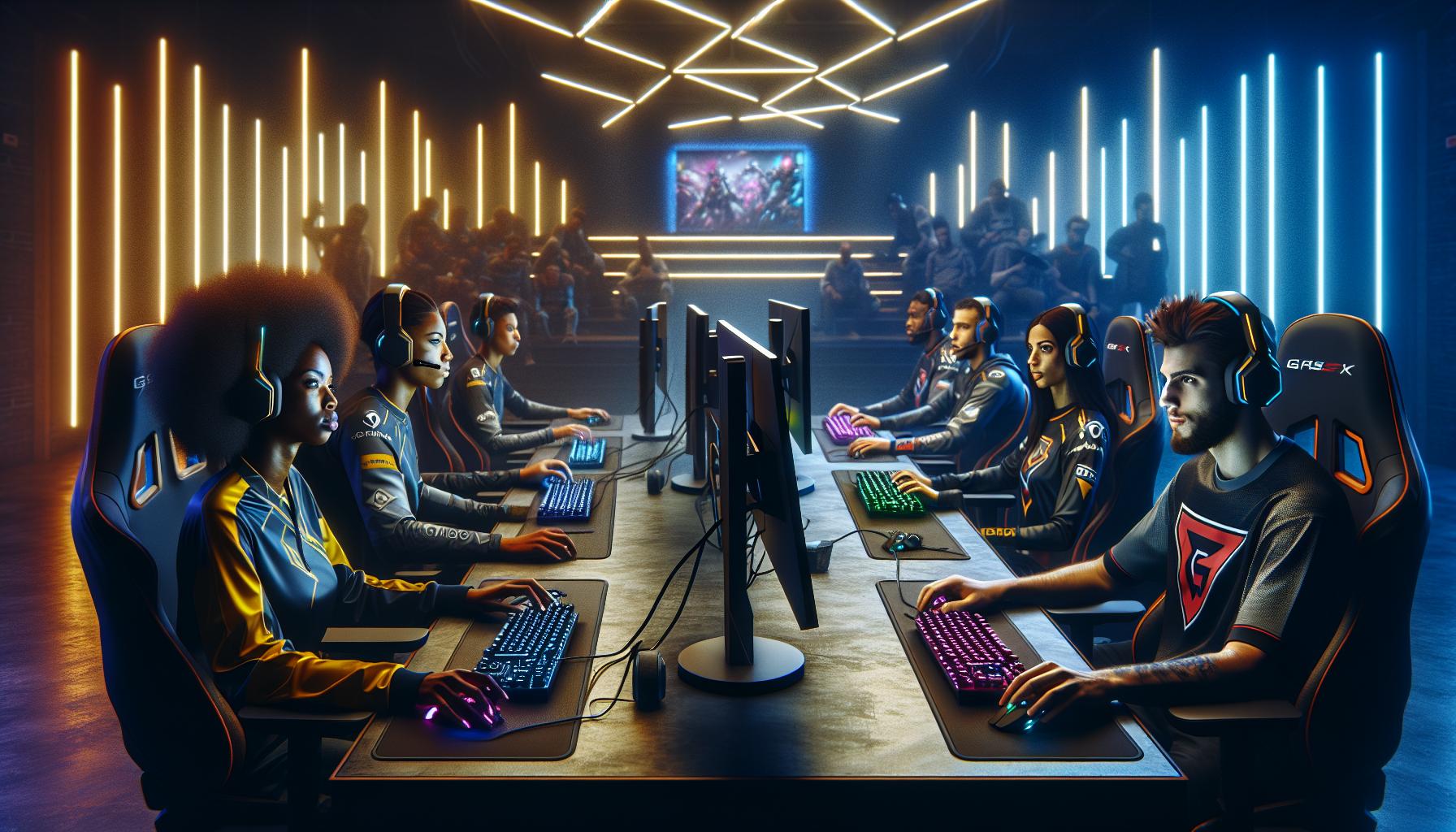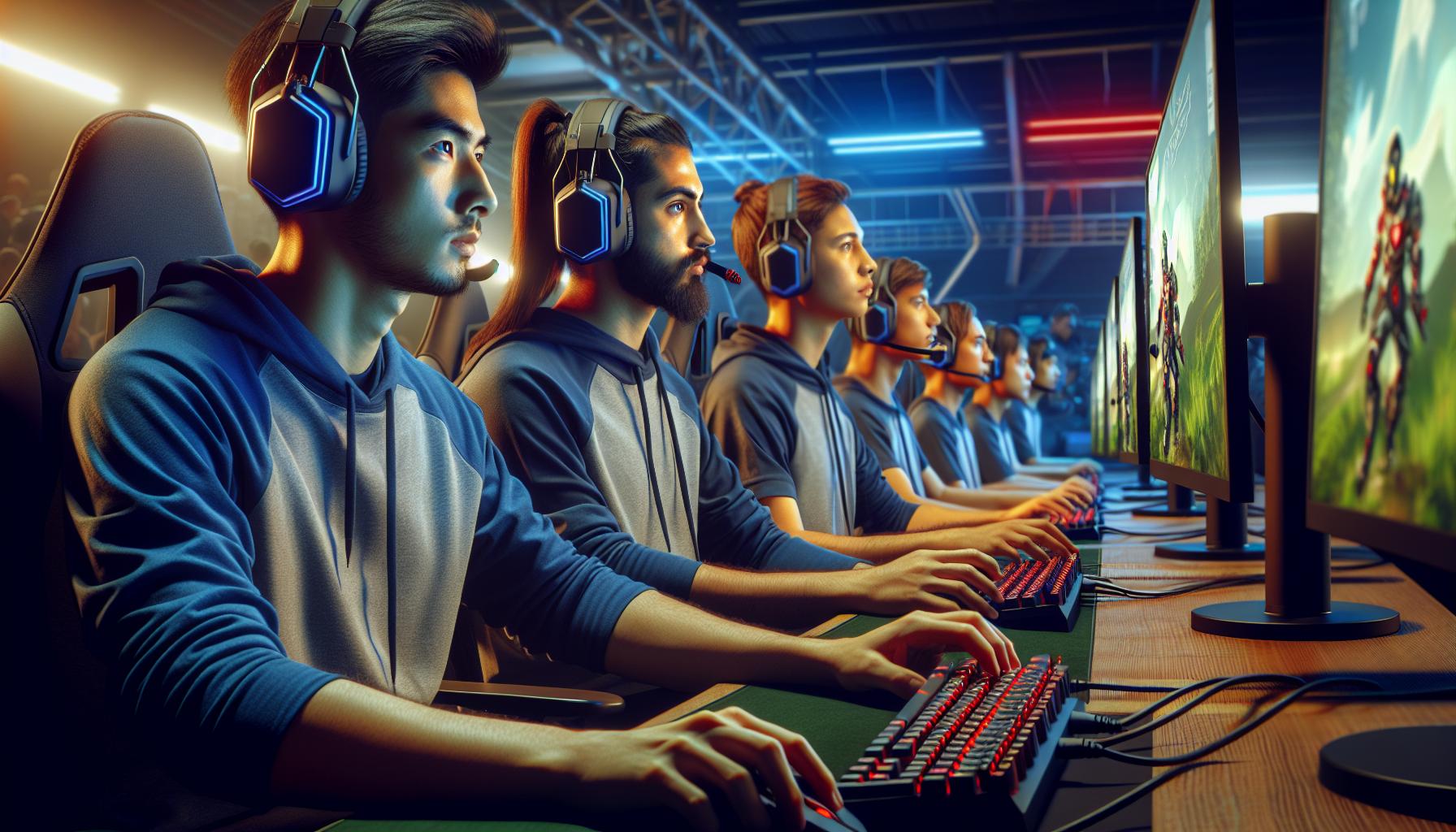In recent years, the debate over esports versus traditional sports has gained significant traction. As video gaming evolves into a competitive arena, it challenges long-held perceptions of what constitutes a sport. With millions tuning in to watch esports tournaments, the lines between physical prowess and digital skill blur, prompting discussions about legitimacy, recognition, and the future of competition.
Fans of both realms passionately defend their favorites, highlighting the unique attributes that each brings to the table. Traditional sports boast rich histories and physical challenges, while esports showcases strategic thinking and quick reflexes. As society embraces these digital competitions, understanding their similarities and differences becomes crucial for fans, athletes, and industry stakeholders alike.
Key Takeaways
- Evolution of Competition: The growth of esports has blurred the lines between traditional sports and digital gaming, challenging perceptions and inviting discussions on their legitimacy.
- Distinct Challenges: Traditional sports focus on physical athleticism, while esports emphasize mental acuity, strategic thinking, and quick reflexes, showcasing unique abilities in both fields.
- Accessibility and Inclusivity: Esports offers greater accessibility compared to traditional sports, as it requires only a gaming device and internet, allowing for diverse participation regardless of age, gender, or physical ability.
- Audience Demographics: Esports attracts a younger audience, with 70% of viewers aged 18 to 34, reflecting a cultural shift towards digital entertainment platforms like Twitch and YouTube Gaming.
- Revenue Generation: The esports industry is rapidly growing, with revenue streams—including digital advertising and sponsorships—outpacing some traditional sports metrics, highlighting its increasing cultural significance.
- Training Regimens: Both arenas emphasize skill development, though the training focuses differ, with esports athletes honing mental strategies and coordination, while traditional sports athletes concentrate on physical conditioning and sport-specific techniques.
Esports Vs Sports
Esports consists of organized, competitive video gaming, featuring titles like League of Legends and Dota 2. Esports athletes demonstrate exceptional skill and strategy, competing in teams or individually for significant prizes. Events attract millions of viewers, filling stadiums and streaming platforms worldwide. The community thrives on online interactions, building dedicated followings around players and teams.
Traditional sports involve physical athleticism, team dynamics, and often long-established rules. Sports like basketball, soccer, and football emphasize endurance, strength, and coordination, drawing crowds to arenas and fields. These activities foster community through local and national events and long-standing rivalries.
Both forms of competition show similarities, such as teamwork and training disciplines. Each realm cultivates dedicated communities and giant audiences, providing entertainment and possibilities for professional careers. Understanding how esports and traditional sports intersect and diverge enriches the conversation around their growing prominence and cultural significance.
Key Differences Between Esports and Sports

Esports and traditional sports differ significantly in various aspects, particularly in their challenges and accessibility.
Physical vs. Mental Challenge
Traditional sports emphasize physical challenges, demanding strength, endurance, and agility. Athletes engage in rigorous training regimens to enhance their physical abilities, contributing to their overall performance. In contrast, esports prioritize mental challenges, requiring players to exhibit strategic thinking, quick reflexes, and decision-making skills. Competitors often train for extensive hours, focusing on improving their reaction times and game strategies to defeat opponents. Both domains challenge participants in unique ways, reflecting their distinct nature.
Accessibility and Inclusivity
Traditional sports often require access to specific equipment, facilities, or locations to participate. Geographic limitations and financial barriers can restrict involvement for potential athletes. Conversely, esports provide broader accessibility, as individuals only need a gaming device and an internet connection. This inclusivity allows diverse participants, regardless of age, gender, or physical ability, to compete on a more equal playing field. Both landscapes foster community engagement, yet esports break down barriers inherent in traditional sports, promoting wider participation.
Popularity and Audience Engagement

Esports has rapidly gained a substantial following, rivaling traditional sports in terms of viewership and fan engagement. Understanding the demographics of viewers and the diverse revenue streams in esports versus traditional sports highlights their growing cultural significance.
Demographics of Viewers
Esports attracts a younger audience, with 70% of viewers aged 18 to 34 years. In contrast, traditional sports TV audiences average around 50 years old. This younger demographic showcases a higher affinity for digital platforms, as platforms like Twitch and YouTube Gaming facilitate real-time interactions. A notable 60% of esports enthusiasts participate in gaming themselves, indicating a strong connection between consumption and engagement. Additionally, gender diversity in esports is increasing, as female participants and viewers comprise approximately 30% of the audience.
Revenue Streams and Sponsorships
Esports generates diverse revenue streams, surpassing traditional sports in specific areas, including digital advertising, sponsorships, and ticket sales. In 2022, the global esports market reached $1.38 billion, with a projected annual growth rate of 20%. Sponsorships account for about 40% of this revenue, as companies target young, tech-savvy audiences. Traditional sports also rely heavily on sponsorships, but with established brands and longer-term deals. Ticket sales remain significant in traditional sports, often generating millions per event, while esports focuses more on online viewership, where virtual tickets for tournaments draw substantial revenue.
Skill Development and Training Regimens

Skill development and training play crucial roles in both esports and traditional sports, albeit in different ways. Understanding the techniques and methodologies unique to each helps illuminate their distinctions.
Techniques in Esports
Esports athletes employ various techniques to hone their skills. Practicing specific game mechanics, improving hand-eye coordination, and mastering in-game strategies constitute essential components of their training. Athletes often analyze game footage to understand opponents better and develop counter-strategies.
Additionally, teamwork remains vital in esports. Communication and collaboration are pivotal, especially in team-based games like Overwatch and Dota 2. Training routines often include team practices focusing on role specialization and synergy, enhancing overall performance during competitions. Mental conditioning also plays a significant role; players use visualization and reflex training to prepare for high-pressure situations.
Training for Traditional Sports
Traditional sports training involves a multifaceted approach covering physical conditioning, skill honing, and tactical development. Athletes focus on strength training, endurance exercises, and flexibility routines to enhance their physical abilities. Sport-specific drills, such as dribbling in basketball or passing in soccer, refine technique and improve performance standards.
Coaches guide athletes in developing game strategies, analyzing opponent play styles, and adjusting tactics accordingly. Additionally, athletes engage in mental training techniques like goal setting and visualization to enhance focus and performance under pressure.
Both esports and traditional sports require dedication and structured training, with each discipline developing unique skills needed for success in their respective arenas.
Debate Between Esports And Traditional Sports
The debate between esports and traditional sports continues to evolve as both realms attract passionate followers. Each offers unique experiences that resonate with different audiences. Esports thrives on accessibility and strategic depth while traditional sports celebrate physical prowess and community engagement.
As both fields grow in prominence and influence, it’s essential for fans and stakeholders to appreciate their distinct characteristics. This understanding fosters a richer dialogue about the future of competition and the cultural significance of both esports and traditional sports in today’s society.

